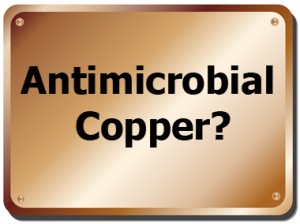Microbes on buildings Analysis of dark crusts on the church of Nossa Senhora do Carmo in Rio de Janeiro, Brazil, using chemical, microscope and metabarcoding microbial identification techniques – Christine Gaylarde – International Biodeterioration & Biodegradation ($35.95) The dark crust on the surface of the Nossa Senhora do Carmo church, in the centre of Rio …
Microbes in subways Bioaerosols in the Barcelona subway system – X. Triadó-Margarit – Indoor Air ($6 to rent, $38 to own) (…) We examined the microbiological composition and abundance in space and time of bioaerosols collected in the Barcelona subway system during a cold period. (…) Multitag 454 pyrosequencing of the 16S rRNA gene was used to …
Interesting article addressing the risks of using copper in human structures for its antimicrobial qualities. Copper resistant bacteria could prove to be a risk for human health, as certain parts of the human immune system (notably macrophages) utilize it to dispatch potentially dangerous microbes. While many places use copper as a safety measure against harmful …
Here are the papers on the built environment microbiology that I found in the past weeks. For more microbiology papers, please check out my daily blog MicrobiomeDigest. Copper surfaces are associated with significantly lower concentrations of bacteria on selected surfaces within a pediatric intensive care unit – Michael G. Schmidt – American Journal of Infection …
Time for an update with recent papers on the microbes of the built environment. I have many, so I will break them up into two different posts. Microbes in buildings Microbial Density on Electronic Devices – Sulan Kith – Int.J.Curr.Microbiol.App.Sci Human participants each used an tablet, smart phone and media player for 20 minutes. We predicted that microbial density would …
Just a quick post here to highlight an article I was reading over the break, “Inactivation of Norovirus on Dry Copper Alloy Surfaces”. We’ve posted a number of times in the past about the use of copper in the built environment as an antimicrobial (e.g. here, here, here, here, and here). It’s a somewhat charged …
(update, 3-25-14. Fixed the link to the article being described and added link to PDF of paper available from Research Gate) I posted an article in the past discussing the benefits of copper as an antimicrobial agent, but the authors had a huge conflict of interest. However, I still found the idea of using copper …
A recent microbe.net post discussed the use of copper as an antimicrobial to prevent infections in healthcare settings. This is not a particularly new concept, but unfortunately, the literature appears dominated by authors who received funding from the copper industry and its associations. Such industrial funding is not unique to copper and is, sadly, more …
This interesting review article from 2012 bridges clinical Microbiology and the study of the built environment. Authors Borkow and Monk discuss various sources of nosocomial infections (NI) and a potential solution to the problem. Despite rigorous efforts to sterilize and sanitize hospitals, NI are persistent and pose a serious threat to patients who are already …
I’ve posted a couple of times in the past about the potential for using copper in the built environment to limit bacterial growth and/or pathogenicity (e.g. here and here). I’ve heard and read things about copper which cover the whole spectrum from “it’s a magic bullet” to “snake oil”. I’m guessing it’s somewhere in …
